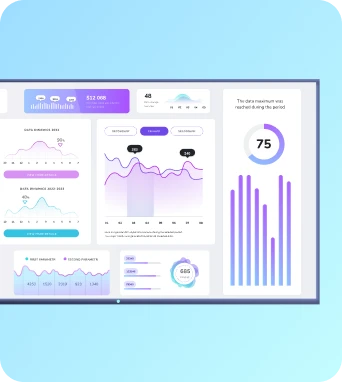Browser-based tools
Browser-based tools are web applications and in-browser utilities that let teams design, manage and preview digital signage and TV dashboards without installing native software. They enable content creation, scheduling, monitoring and integrations through a browser, supporting remote updates and rapid iteration across distributed display networks.
Browser-based tools
How browser-based tools work for digital signage
At their core, browser-based tools present a user interface in the browser while relying on cloud-hosted services to store assets, render templates and orchestrate playback. Users upload images, videos and data sources via drag-and-drop panels, assemble scenes on a timeline or grid, and apply schedules that determine when specific content appears on which displays. The browser handles the authoring experience and immediate previewing, often using client-side rendering to let users see exactly how a layout will look on a target screen size. For operators managing TV dashboards, this means they can create a dashboard layout, populate it with live widgets and immediately check responsiveness without leaving the browser. Templates, style controls and reusable components accelerate setup and maintain visual consistency across multiple locations. Collaboration and role management are common features in browser-based signage platforms. Designers can work on draft playlists while editors review changes and administrators approve and publish. Version history and staging environments reduce the risk of accidental updates reaching live displays, and rollback capabilities make it straightforward to revert to a known-good configuration. Integration options are wide: browser tools commonly include connectors for data sources such as spreadsheets, RSS, social feeds, weather services and bespoke APIs. That extensibility allows TV dashboards to present live metrics, KPIs and schedules with minimal development effort. Finally, because the control plane resides in the cloud and the interface runs in standard browsers, training requirements are lower; non-technical users can be empowered to manage displays without deep IT support.
Security, performance and deployment considerations
When adopting browser-based tools for digital signage, consider both the security posture and the operational model for playback. The management interface must enforce secure authentication, ideally with single sign-on and role-based access control to limit who can publish content. All communication between browser clients, cloud services and player devices should use HTTPS and follow best practices for certificate management. Content and data integrations need to respect privacy and access controls, particularly where dashboards surface sensitive operational metrics. Audit logs and activity reports help maintain accountability and support compliance requirements for larger organisations. Performance and reliability are equally important. While the browser is used for authoring, playback is usually handled by a dedicated player app or a managed browser on the display. This separation ensures smooth, uninterrupted rendering even when previewing or editing via a remote browser. Content delivery should leverage CDNs and caching to reduce bandwidth and improve load times for images and video; smaller asset sizes and optimised codecs also minimise the risk of stuttering. Network policies should allow player devices controlled access to required endpoints while restricting unnecessary traffic. For remote troubleshooting, browser-based tools often provide device status, logs and screenshots so administrators can diagnose issues without a site visit. Finally, test deployments and staged rollouts help validate schedules, permissions and integrations before changes are applied network-wide.
Getting started with Fugo browser-based tools
Keep the learning going...
Browser-based CMS
A browser-based CMS is a web-hosted content management system that lets teams create, schedule and publish digital signage content directly from any modern browser. It removes the need for local server installations, supports centralised asset libraries, access controls and real‑time updates for TV dashboards and workplace displays.
Built-in AI analytics
Built-in AI analytics refers to onboard machine-learning capabilities within a signage platform that automatically collect and analyze viewer and display performance data—such as audience size, attention time, content engagement, and playback health—delivering real-time insights, automated reports, and actionable recommendations to optimize scheduling, content, and network reliability without external tools.
Built-in color correction
Built-in colour correction is a Fugo feature that automatically aligns colour output across TV dashboards and digital signage players. It applies calibration profiles, white balance and gamma adjustments, plus per-screen offsets, to maintain consistent, accurate brand colours, reduce visual drift and simplify large-scale display management and maintenance.



